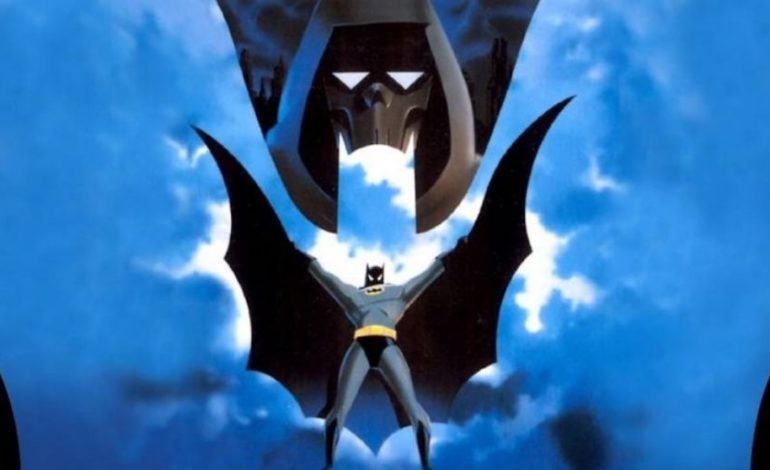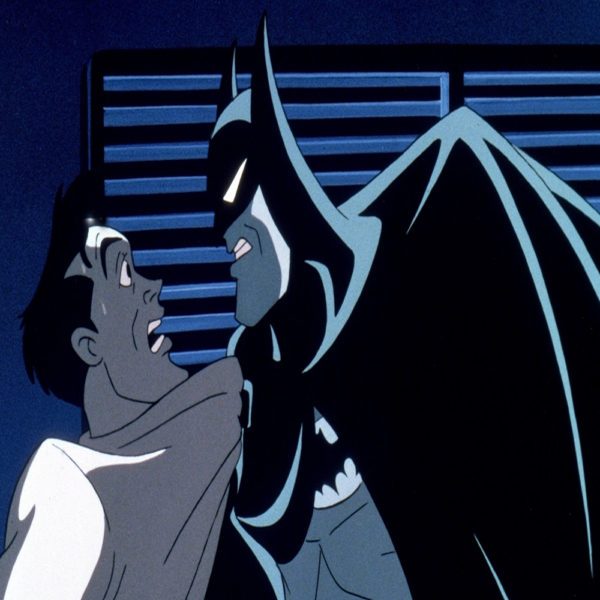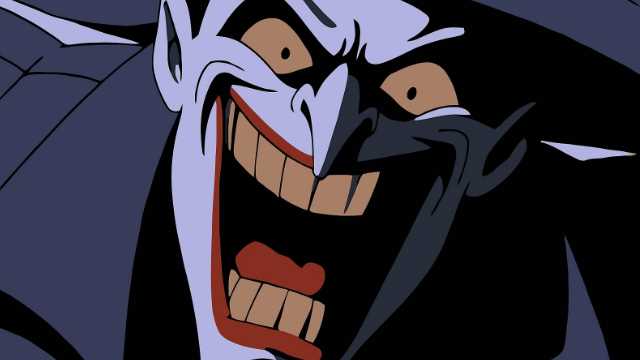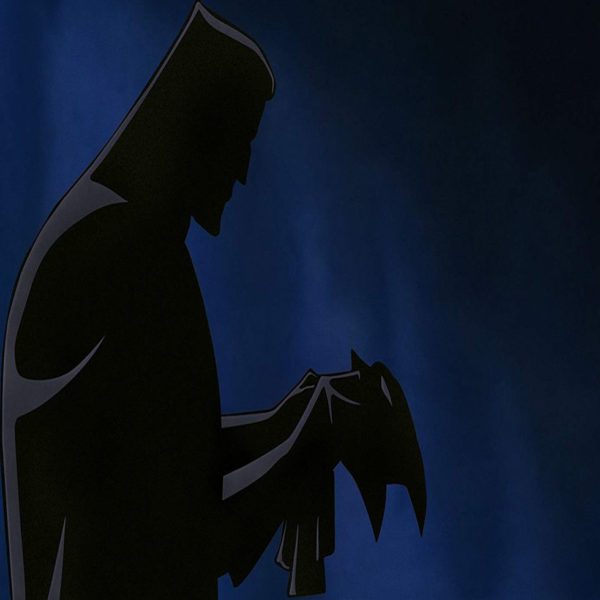

In the wake DC Comics’ online event DC FanDome, the internet has been ablaze with the latest news and information on the upcoming slate of comics, movies, video games, and television shows coming from the publisher. Perhaps most noteworthy was the first trailer for Matt Reeves’ The Batman, starring Robert Pattinson in the titular role. The film promises a dark and gritty tale set early in the caped crusader’s career as he takes on the likes of The Riddler, Penguin, and Catwoman. Pattinson is the latest in a long line of actors to don the cape and cowl. With a character as established and well known as Batman, every interpretation brings a new fresh take on the character. In the endless comparisons between Adam West, Michael Keaton, Christian Bale, and the like, there remains a Batman film that often gets overlooked. In 1993, Warner Bros. Animation would release a companion piece to the popular Batman: The Animated Series television show in the form of Batman: Mask of the Phantasm.
Batman: The Animated Series premiered in 1992 and was mostly attributed to showrunners Bruce Timm and Paul Dini.. Initially pitched as a simple tie-in to Tim Burton’s Batman films, BTAS as it came to be known, took on a life of its own. The series was praised for its dark, mature storytelling that could still appeal to young audiences. The show had a lasting impact on the Batman mythos, being the debut of Harley Quinn before her integration into the comics and crafting Mr. Freeze’s now acclaimed tragic background and relationship to his wife Nora. The show would also spawn the beloved DC Animated Universe or DCAU, a shared universe of DC animated shows consisting of the Batman series, Superman: The Animated Series, Batman Beyond, Static Shock, Justice League, and Justice League Unlimited.
The creative team, fresh off a successful first season of Batman, was put to work on a theatrical film set in the show’s continuity. The resulting film, Batman: Mask of the Phantasm, initially didn’t do as well at the box office as the creators wanted, but soon became a cult favorite among fans, praised for its dark tone and excellent understanding of Batman as a character. There are many who believe that even in the sea of countless Batman adaptations, the show and by extension Phantasm, to be the definitive portrayal of the character.


What Phantasm captures immediately from its opening is a grand, gothic tone. Sweeping shots of the art deco buildings of Gotham with a blood red night sky. This style was carried over the TV series and creates an otherworldly tone. Batman stories, despite being more realistic than say your average Superman story, still take place in a comic book world. Bruce Timm and Paul Dini are careful not to shy away from the fact that Batman comes from a bizarre and over the top world. The painted backgrounds for the TV show were famously done in light colors on a black piece of paper in a style that would be dubbed “dark deco”. The same principle carries over to Phantasm, creating a world that transcends just petty crooks and vigilantes. The world of Phantasm is an ethereal place where figures like Batman seem more like myth than reality. It’s a nice contrast to Christopher Nolan’s Dark Knight trilogy, which hammered down on the realism angle and created something less distinct. With more freedom given to the cast and crew, they were able to create a wholly unique world where even the seemingly paranormal antics of the titular Phantasm don’t seem so outlandish. It’s a style that just wouldn’t translate well to live action. Since comics share so much of their DNA with animation, it’s only natural that the connection feels stronger. The hand drawn characters and backgrounds look like they leapt right off the page.
Credit must also be given to the masterful score by Shirley Walker. The previously mentioned opening credits are accompanied by a haunting orchestral score and Latin chorus. Shirley Walker worked with Danny Elfman on Tim Burton’s Batman and would take cues from that score when working on the TV series. Elfman understood the gravitas and gothic nature of Batman and reflected it in his score. The music in Phantasm plays plenty of homage to Elfman’s original while also creating a sound that feels very unique. It’s almost religious in nature. Batman is established as a mythic figure on the level of Greek warriors like Hercules or even a tragic Shakespearean hero like Hamlet. There’s a reason that the themes of Elfman and Walker are the ones that have endured and continue to be most associated with the character.
Mask of the Phantasm also features a stellar voice cast, headlined by Kevin Conroy as Batman. Conroy got his start voicing Batman in BTAS and continues to play the character in various projects today, including all the works released in the DCAU. Many comic readers cite Conroy as the voice they hear when going through different comics. Conroy is joined by fellow actors Dana Delaney (Andrea Beaumont), Efrem Zimbalist Jr. (Alfred Pennyworth), Bob Hastings (Commissioner Gordon), among many others. The actors don’t let the fact that film is animated or rated PG take away from their performance, delivering all their dialogue with as much nuance and care as they would a more traditional drama. Conroy in particular knows how to strike the balance between the dark, brooding side of Batman, and the more emotional, compassionate side. It’s too easy to make Batman just a grim, dark character who does nothing but terrorize criminals. But Batman is more than that. He always puts his life on the line to save innocents and will always try to help out the people who desperately need help, even someone like Two-Face or Harley Quinn.


The real star of the show however is Mark Hamill’s Joker. Hamill has been playing the Joker as long as Conroy has been playing Batman and like his counterpart has become the de facto voice for many people. Hamill strikes an incredible balance between glee and terror in his performance. His Joker is as psychotic and unhinged as he is cruel and calculating. Sometimes interpretations of the Joker lean too far into the gritty, sinister angle, forgetting the fact that he’s a gleeful character who finds immeasurable delight in causing destruction. Just like Conroy knows when to switch between brooding and caring, Hamill knows how to switch between playful and deadly. Hamill described his Joker’s laugh as a musical instrument with different tones and settings depending on the situation. Hamill’s final laugh at the end of the film is nothing short of haunting.
What truly sets Mask of the Phantasm apart, even beyond its visual and sound design, is its writing and understanding of Batman as a character. Phantasm is something of an origin story, albeit a very different take on one. The film takes place an unspecified amount of time into Bruce’s career as Batman, but features frequent flashbacks to his early 20s after he has undergone his training to become Batman, but hasn’t taken up the mantle yet. At this time in his life he meets Andrea Beaumont, the daughter of a wealthy businessman and the two fall in love. Bruce is torn between settling down and starting a new life with Andrea or continuing his vow to his parents make sure their deaths don’t go unavenged. In a heartbreaking scene, Bruce collapses at his parents’ grave in tears telling them he wants to continue the fight but feels conflicted and that he “never counted on being happy”. Once Andrea abruptly leaves his life, Bruce is left with no choice and finally becomes Batman, ready to avenge the death of his parents and make sure crime never flourishes in Gotham city.
Batman at his core is a tragic character. His origin is one of tragedy, many of the people in his life that he doesn’t end up pushing away often meet tragic ends, and in this film we see that Batman’s greatest enemy isn’t the titular Phantasm or even the Joker, it’s himself. He’s fully willing to deny himself a happy life because he feels an inescapable push to avenge the tragedy of that fateful night in Crime Alley. We the audience know it’s a never-ending fight and Bruce knows it too, but he puts on the cowl every night regardless, and that’s why he’s a compelling character. He’s a tragic hero who will stop at nothing to protect the innocent, even at the cost of his own life, all the while never faltering and never braking his moral code. He’s a figure to look up to and admire but also one to pity and feel sorry for. Mask of the Phantasm understands that’s why people love Batman, and puts Bruce’s moral dilemma right at the heart of the film. Ultimately, the films ends on a note of no matter what, Batman will do what he can to make sure the people of Gotham are safe. So that no other eight year old boy has to watch their life fall apart in front of them in an instant.


Batman: Mask of the Phantasm is a film that often gets overlooked when people discuss what they think the best Batman movie is. It’s frequently passed over for being animated, and there’s often a bias against works of animation; that they can’t be as serious as live action works, or that they’re meant to appeal towards children and are somehow “less” for that. While that’s obviously not true, Batman and other comic book characters are in a unique position where animation might actually better suited to adapting their stories. Comics are often exaggerated and more stylized in a way that’s very hard to translate into live action. Animation creates worlds and generates feelings that just can’t be done in front of camera. In the case of Mask of the Phantasm, a combination of strong writing and excellent atmosphere creates something that feels more like a Batman comic than any other film. A truly definitive film depiction of the caped crusader.
